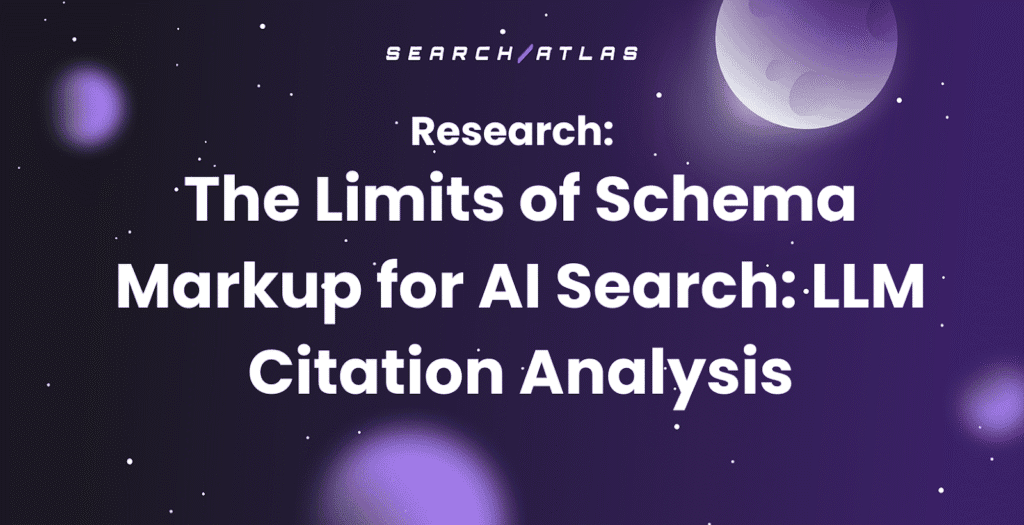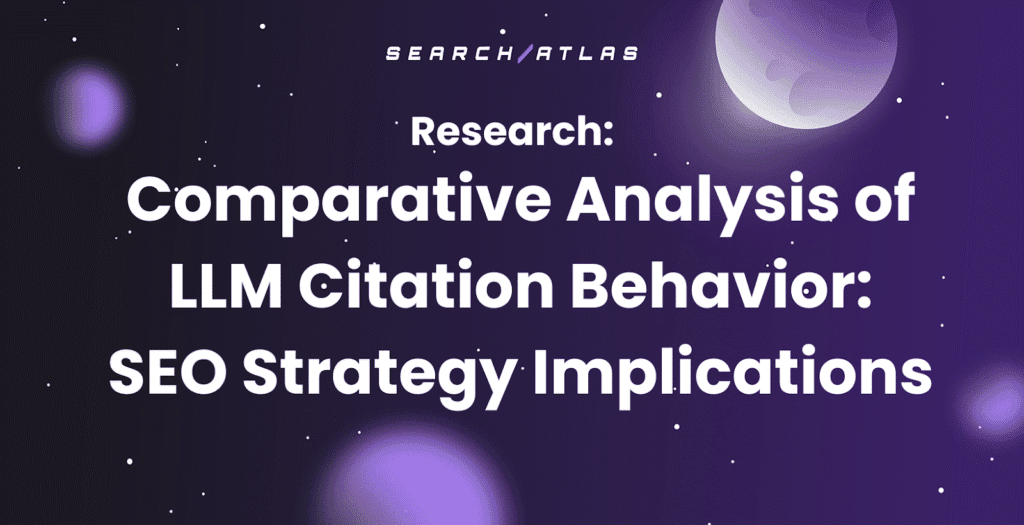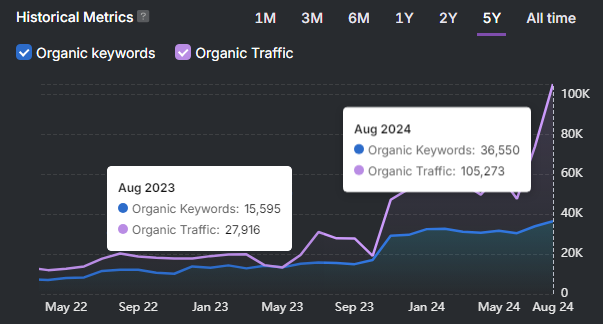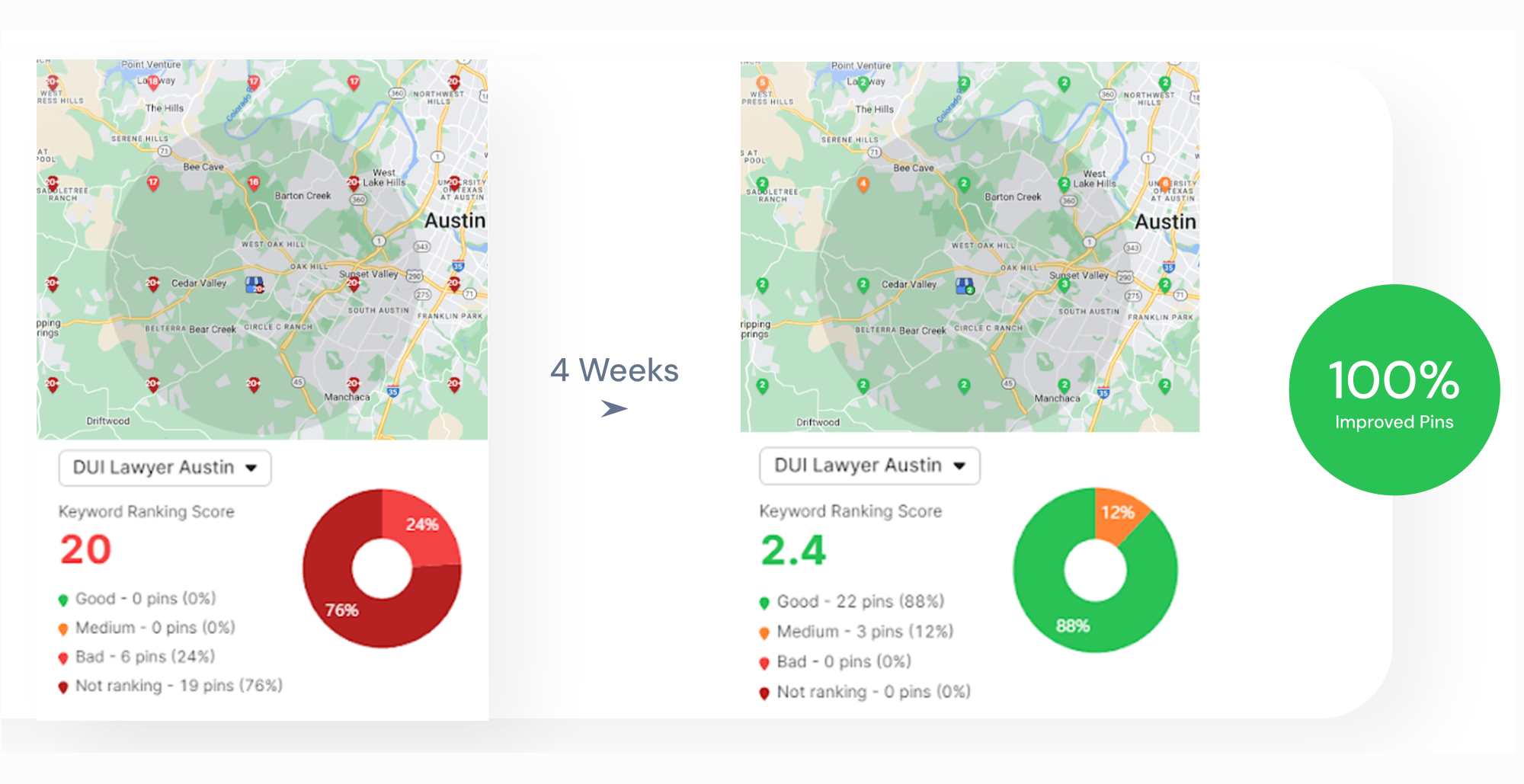Most keywords bring traffic but high intent keywords bring action. High intent keywords are search terms used by people ready to buy, book, or contact your business. These searchers look for specific products, services, or answers with clear goals in mind.
You find high intent keywords in searches that include words like “buy,” “hire,” or “near me.” They attract better leads, increase conversions, and reduce wasted clicks.
In this article, we explain them in more detail, provide examples, and show you how to add them in your content. Keep reading and learn how to use high intent keywords with purpose. 🔎
What Are High Intent Keywords?
High intent keywords are search terms that show a clear desire to take action (buy, sign up, or make a decision). These keywords reflect transactional or commercial intent and often appear late in the buyer’s journey.
Users who search with high intent know what they want and actively look for the best way to get it. High intent keywords often contain terms such as order, buy, near me, branded keywords, or specific locations. These terms bring visitors who move fast and convert more often than general or informational queries.
In the pet care space, for example, someone searching “buy grain-free dog food online,” “best price for senior dog food,” “subscribe to monthly dog food delivery,” or “compare organic dog food brands” has strong intent. These users look for trusted products, clear offers, and fast decisions.

What Is High Intent Content?
High intent content targets users with clear goals. These users often reach the bottom of the funnel. They search for solutions, compare options, or prepare to buy. High intent content delivers exact answers and removes doubts. This content type avoids general topics and vague advice. It provides details that support fast decisions.
Writers create high intent content through product comparison pages, step-by-step purchase guides, customer success stories, and service-specific landing pages. Each piece focuses on action, not awareness.
Some examples are listed below.
- A page titled “Best grain-free dog food for allergies” helps buyers choose between top options.
- A guide like “How to switch your dog to a raw food diet safely” supports users who want fast results.
- A comparison page for “dry vs wet dog food for senior dogs” answers precise concerns.
High intent content meets real needs and leads users to the next step.
High Intent vs. Low Intent Keywords
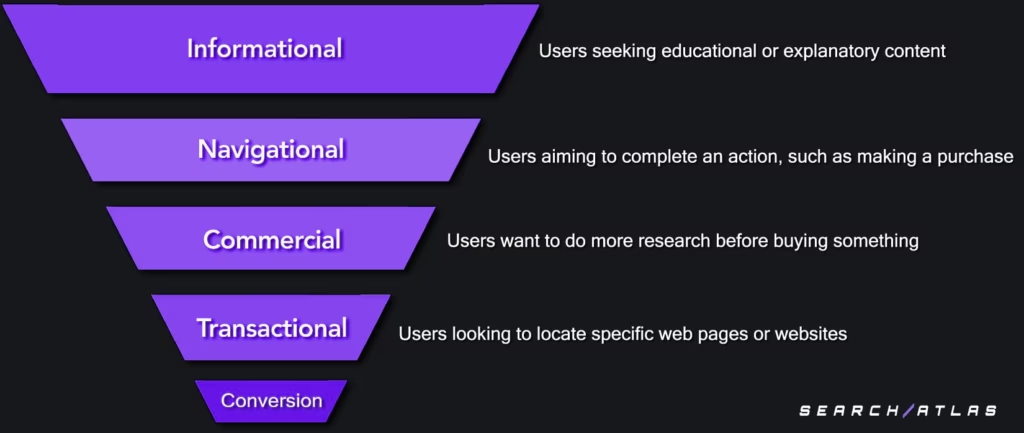
Keyword intent is the purpose behind a search term.
High intent keywords reflect a clear plan to take action. These keywords often show commercial or transactional intent. Users who search terms like “buy large breed puppy food online” or “subscribe to fresh dog food delivery” already plan to make a decision. They look for fast, direct solutions with minimal hesitation.
Low intent keywords suggest early-stage interest. These users still gather information and explore options. Searches like “how much protein do puppies need” or “types of dog food explained” show curiosity, not commitment.
High intent keywords lead to stronger conversions. Low intent keywords build visibility and trust. Use both based on your goals. Low intent keywords support long-term growth, while high intent keywords drive results fast. It is a part of a deeper strategy for keyword intent matching.
7 Steps to Finding High Intent Keywords
High intent keywords often appear as long-tail search terms. These phrases contain three or more words and reflect a specific action or goal. They bring users who want to act, not browse. Use the following steps to identify keywords that attract serious buyers.
1. Understand the Target Audience
Start with research. Analyze what users want during the decision stage. Focus on their urgent needs, not general interests. Use real feedback, surveys, or onboarding interviews to uncover pain points. Collect exact phrases users mention when they look for solutions. Record patterns and repeat questions.
2. Use Keyword Research Tools
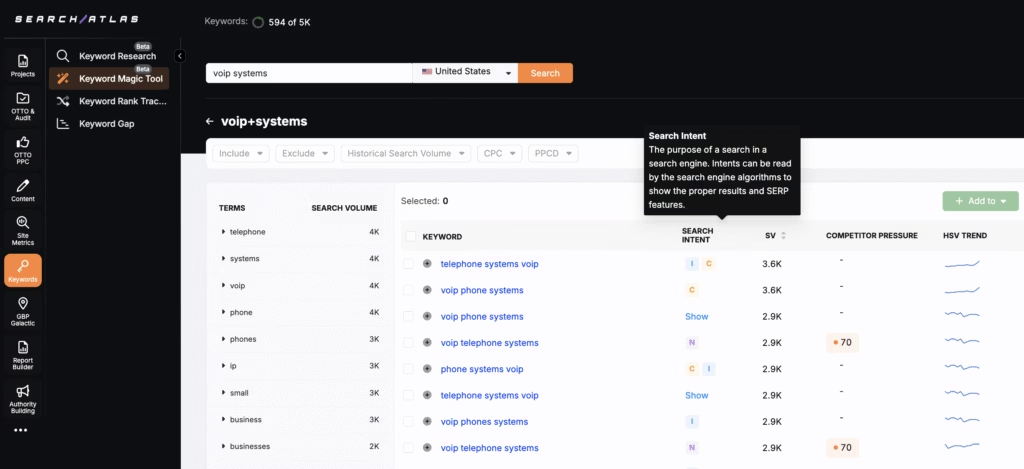
Enter these phrases into a keyword research tool. Tools such as Search Atlas highlight long-tail keywords with strong commercial signals.
The Keyword Magic Tool by Search Atlas provides fast access to keyword variations. Start with a primary term. The tool generates related long-tail keywords that match specific search intent.
Each keyword includes data for search volume, cost-per-click (CPC), and intent type. This helps identify phrases with commercial or transactional signals. Focus on keywords with high CPC and buyer-focused language. These often indicate high intent.
Use the results to outline content. Group keywords with similar intent. Apply them as subheadings or supporting sections. This approach improves topical depth and targets bottom-of-funnel traffic with precision.
The tool filters keywords by intent type, so skip low intent terms. Prioritize exact-match phrases with clear transactional intent.
3. Examine the SERPs
Search each keyword and study the results. A keyword with high intent usually triggers product pages, shopping ads, or list-style articles. These formats signal transactional value.
For example, search “buy organic dog food”. The SERP includes product category pages, rich snippets, and brand comparisons. These elements show that users want to purchase.
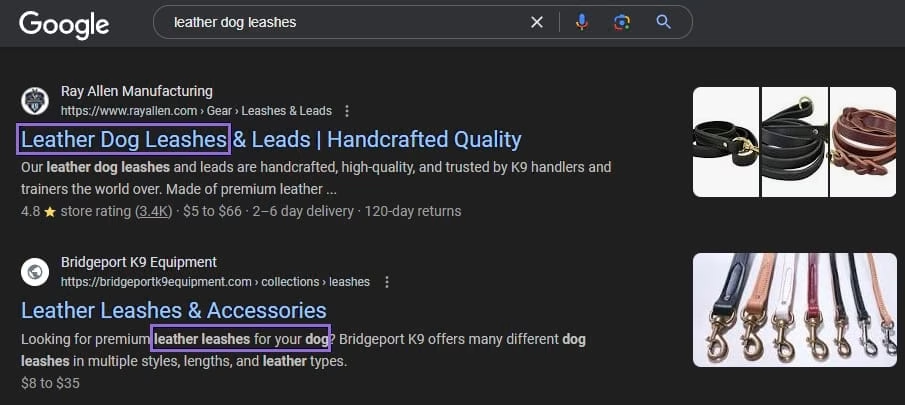
Avoid targeting keywords that produce vague blog posts or unrelated guides. Focus on those with clear product listings and structured review formats.
4. Analyze the Competition
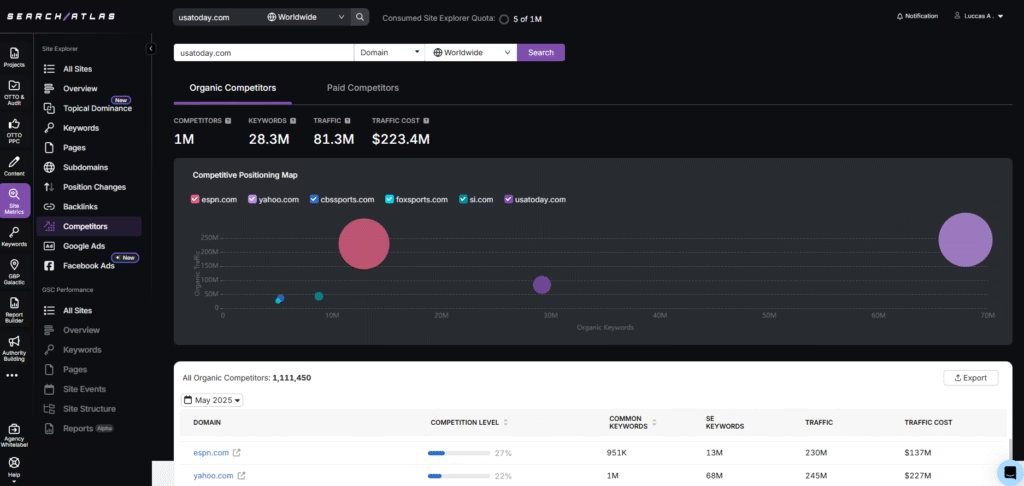
Study what top competitors rank for. Look at their high-ranking pages and extract keywords with transactional value. Tools like Search Atlas offer competitor keyword data. Match their high intent phrases with your content.
Check their meta titles, product pages, and URLs. These areas reveal the highest intent keywords they target.
Use the Competitors tab in Site Explorer to discover competitors for your target page, domain, or subfolder.
This SERP competitor tool will show you keywords the competitors are targeting and other metrics that help you decide what keyword to use or which competitor to take on.
Metrics for organic competitors are listed below.
- Indexed Pages. Shows the five most linked pages on the domain. Displays URL, number of backlinks, and visibility.
- Competition Level. Measures overlap between domains. Scores based on keyword count and shared keyword volume.
- Common Keywords. Counts top 20 organic keywords that both domains rank for.
- Organic Competitors. Lists domains with overlapping organic keywords. Includes volume, keyword match, and rank distance.
- SE Keywords. Displays keyword total that brings traffic from Google’s top 100 organic results.
5. Spot Buying Language in Keywords
Look for specific action words. High intent keywords often contain terms such as those listed below.
- buy
- order
- schedule
- subscribe
- near me
- free quote
- compare
Combine these terms with specific products or services. This creates long-tail keywords that bring focused traffic. Examples are listed below.
- compare best natural dog food brands
- subscribe to fresh raw dog food
- hire local dog trainer near me
6. Collect Feedback from Surveys
Use onboarding forms or email surveys. Ask questions about what users searched before landing on your site. Record common phrases and unmet needs. Include questions about product preferences, decision hurdles, or comparison criteria.
Track responses. Match the answers with specific keyword variations. Build content around the words users already use during final-stage searches.
7. Track Results and Refine the List
Monitor traffic and conversions for the keywords you target. Remove terms that attract visitors with low intent. Replace them with stronger variations. Repeat the research cycle every quarter. Use the data to sharpen your focus.
Follow SERP elements triggered by your targeted keywords in Search Atlas Keyword Ran Tracker.

How to Use High Intent Keywords in SEO
Focus on keywords that appear in bottom-of-funnel pages. Build landing pages, product comparisons, and offer-driven content around them.
Incorporate Them in Landing Pages
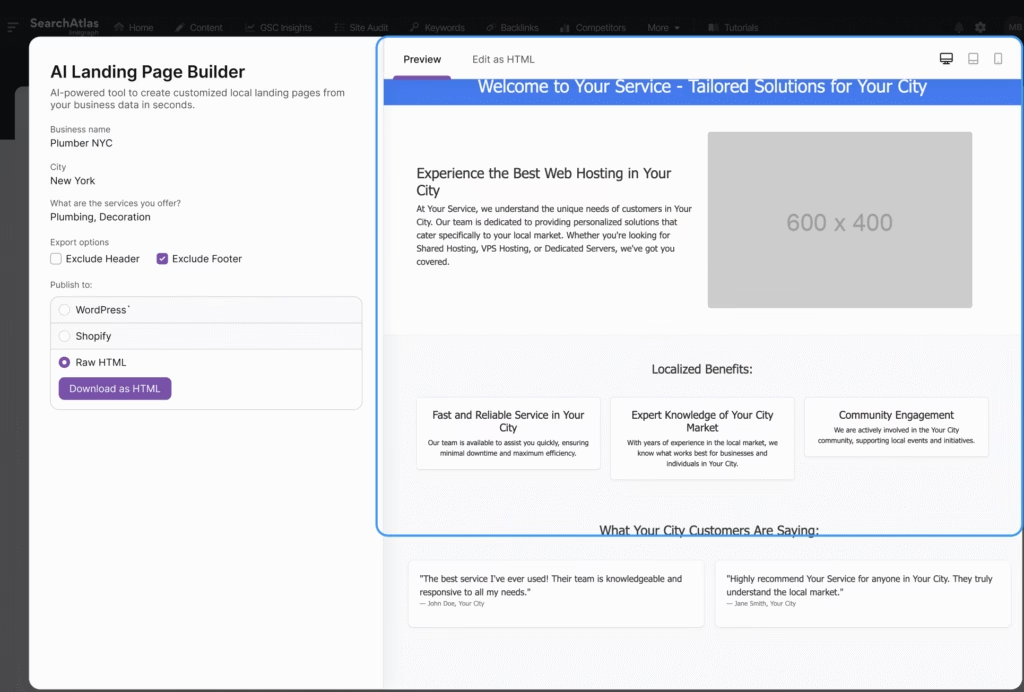
The AI Landing Page Builder creates local pages based on business data and target locations. Each page includes high intent keywords such as “buy,” “order,” or “near me,” paired with service or product terms.
The AI Landing Page Builder uses this input to build location-specific pages that reflect user search behavior. Businesses enter basic information, and the system generates content that highlights services, geographic relevance, and user intent.
The AI Landing Page Builder is located in the OTTO SEO dashboard under New Content.
The tool allows you to generate and publish pages directly from the dashboard. It increases visibility in the local map pack with unique, keyword-rich content.
With the AI Landing Page Builder, build hundreds of optimized pages quickly and increase phone calls, store visits, and revenue in every market.
Create Product Comparisons
Content Genius in Search Atlas creates high intent product comparison and review pages by guiding users through structured AI workflows.
Users begin by setting up folders with clear writing preferences. Each folder stores settings specific to content goals, keyword targets, and geographic relevance. The tool supports detailed product-focused content that aligns with commercial and transactional queries.
The steps to create high intent review or comparison content are listed below.
- Create a settings folder with website details, preferred writing tone, and formatting preferences.
- Choose the “Write With AI” workflow.
- Enter a topic like “X vs Y” or “Best [product] for [use case],” along with relevant keywords.
- Select the target country, state, or city for local targeting.
- Generate the article and open it in the content editor.
- Improve the content using the Content Score and on-page suggestions.
Content Genius analyzes top-ranking competitor pages, extracting terms, headings, word counts, and entity usage. It helps identify high intent phrases like “buy,” “compare,” “best,” “vs,” and “review” that reflect decision-stage queries. The NLP term grid shows which semantic terms appear in top-ranking content and how often each term appears in the generated page.
Content Genius allows you to write content yourself, write using AI, or write in bulk using AI.
Use High-Intent Keywords in the Right Places
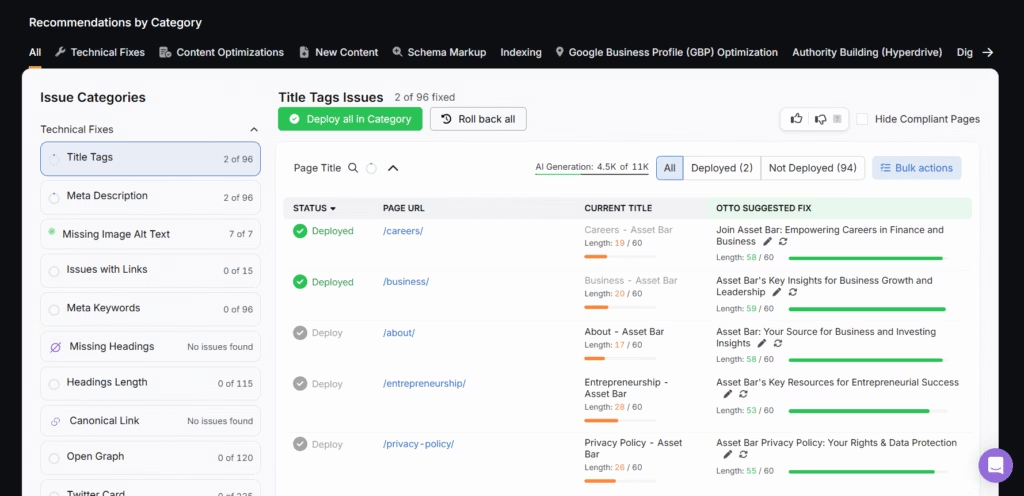
High-intent keywords belong in specific locations to match searcher expectations and improve rankings. The most important placements are listed below.
- Meta titles. Add high-intent phrases such as “buy,” “compare,” “top,” or “best” at the start of the title. Example. Buy Wireless Headphones Online – Free Shipping Available.
- Meta descriptions. Include a call to action and match commercial or transactional search queries. This improves click-through rates.
- Headings (H1, H2, H3). Use comparison or purchase-driven terms. Example. Top Features of [Product] or [Product A] vs [Product B].
OTTO SEO scans the entire website and flags issues that prevent keywords from working effectively. These issues are listed below.
- Missing or duplicate title tags
- Weak or missing meta tags
- Empty image alt text
- Missing or overly long headings
- Improper link structure
- Missing keywords
OTTO SEO fixes them directly with 1 click.
Incorporate Them in Your Local SEO Strategy
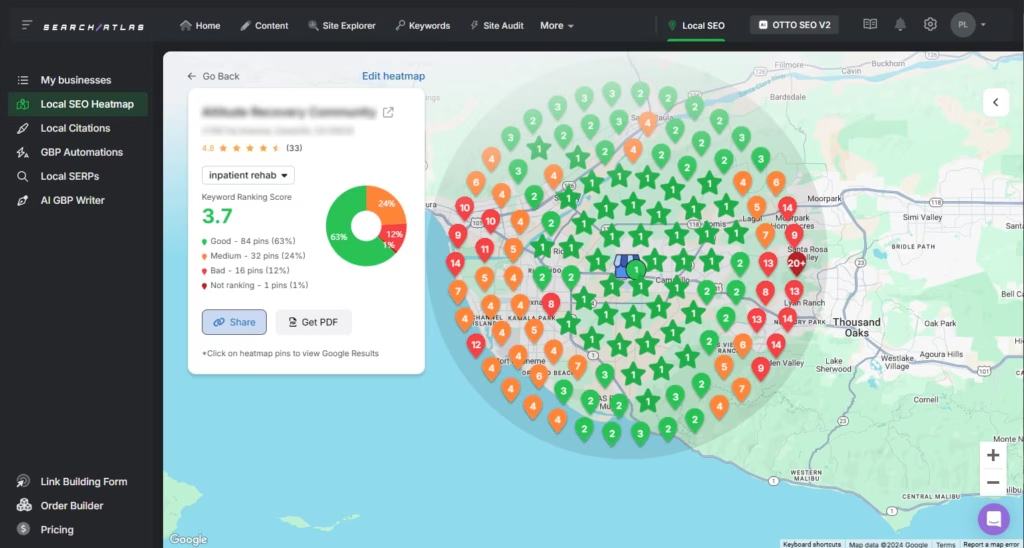
High-intent keywords improve visibility in local search when used with specific geographic terms.
Add location names to phrases like buy, near me, or top-rated to match searcher needs. An example of a local high intent keyword is buy electric bikes in Miami. These phrases match local intent and support map pack rankings.
In your local SEO tools, use the Local Search Results feature to preview how your content ranks in different areas. This helps you adjust target keywords per region.
Google Business Profile (GBP) supports high-intent keyword use. Add these phrases naturally in your business description, services, and posts. Accurate category selection and keyword use improve relevance and ranking in local searches.
Finally, follow rankings in the Local SEO Heatmap to understand how your business ranks for local keywords in a custom radius around your physical business location.
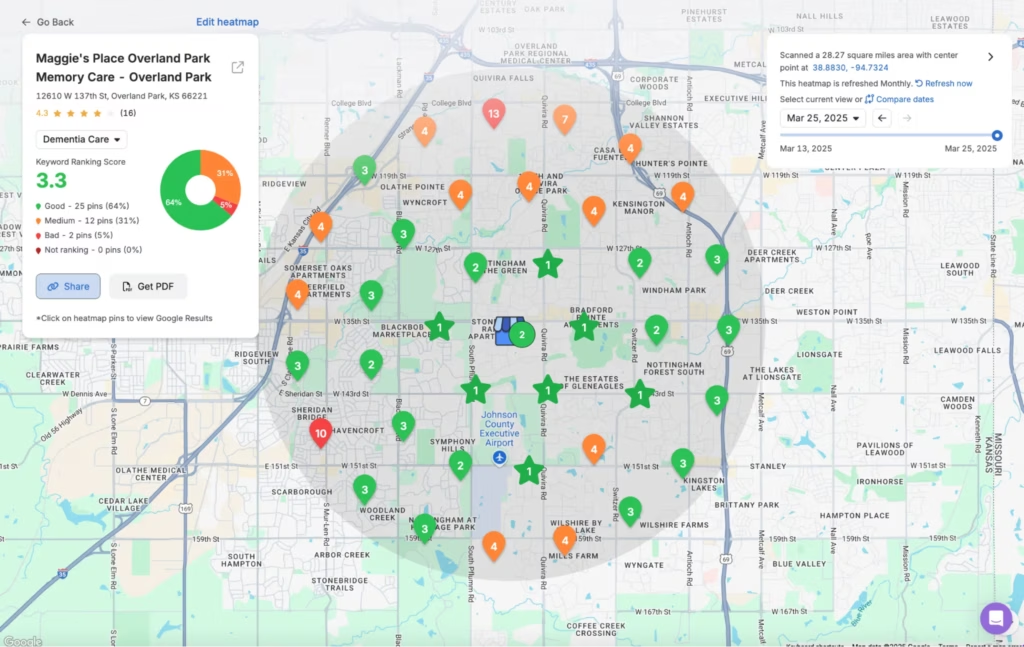
Increase Conversions with New Generation SEO Tools
High-intent keywords are the secret weapon for boosting conversion rates. When you use them strategically, your business stands out to customers who are ready to take action.
Search Atlas helps you automate this process with ease. It finds high-intent keywords, analyzes your competitors, and ensures your content is optimized to attract local customers.
Sign up for a 7-day FREE trial and start targeting high-intent keywords like a pro. No commitment, cancel anytime—because you deserve results without the hassle!



